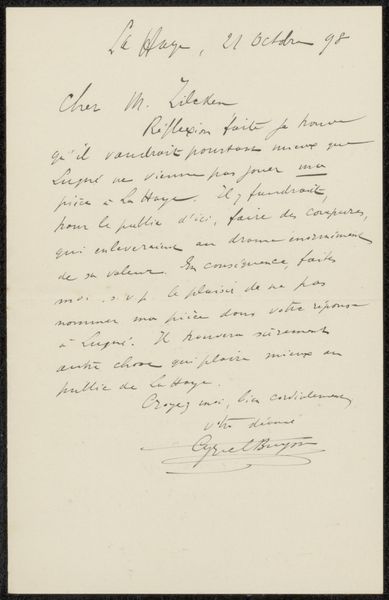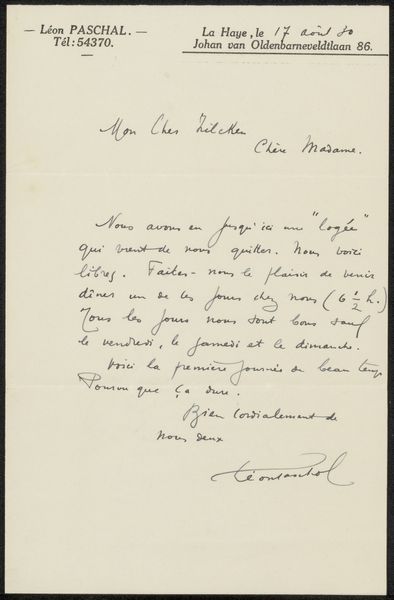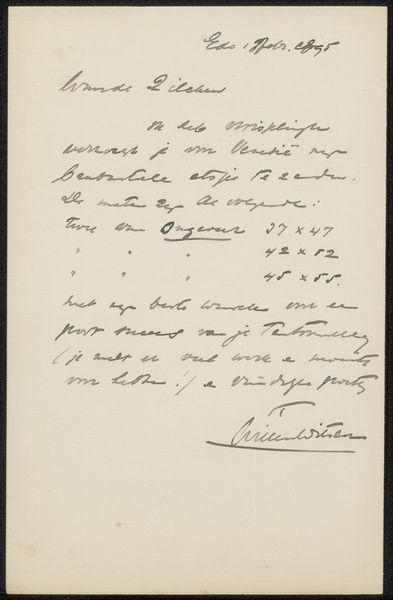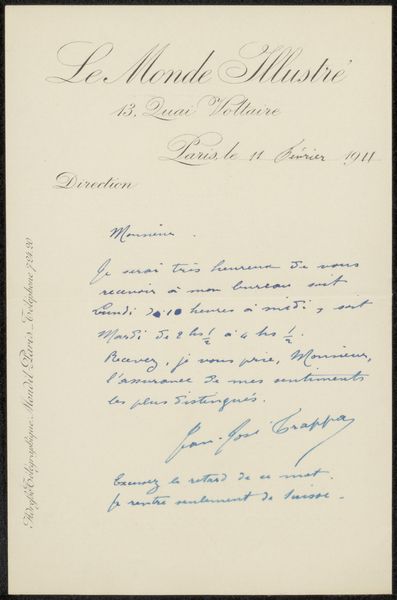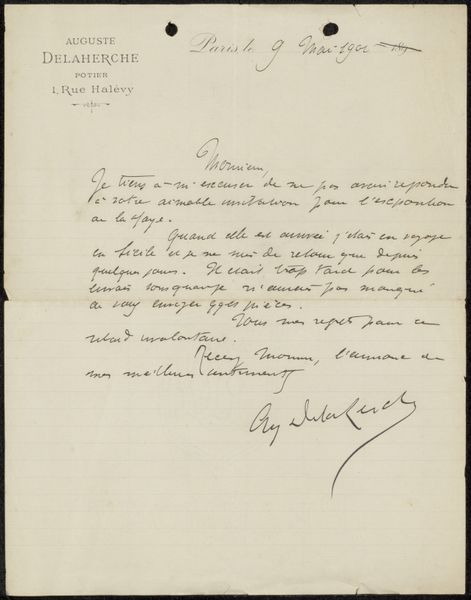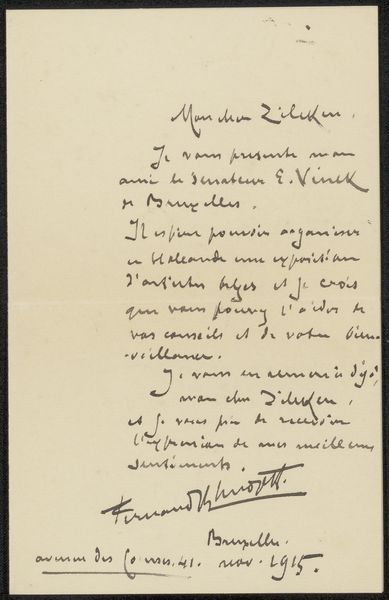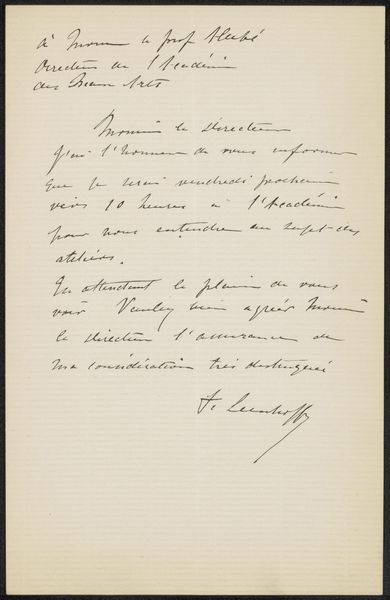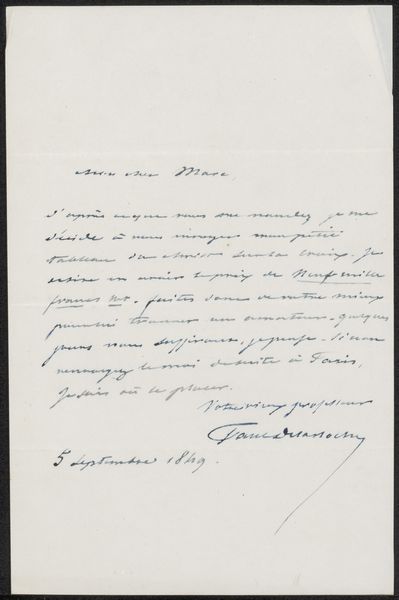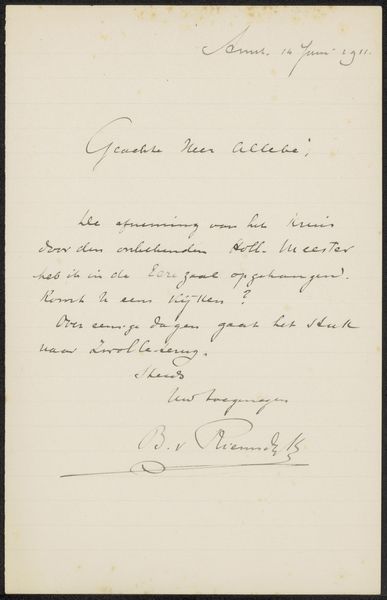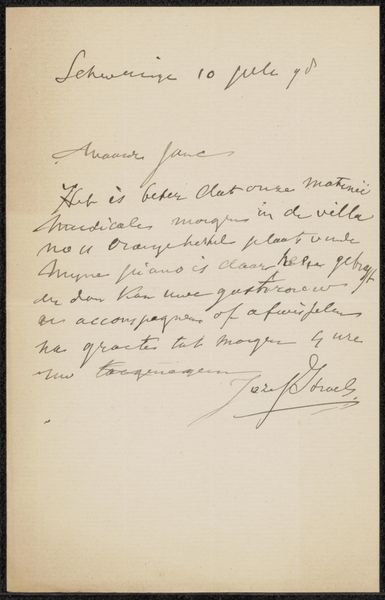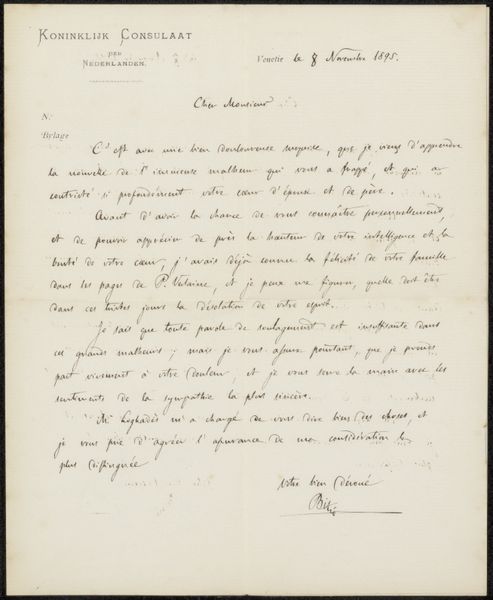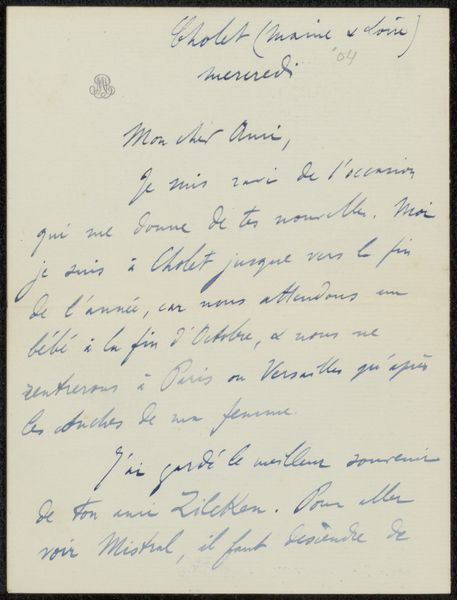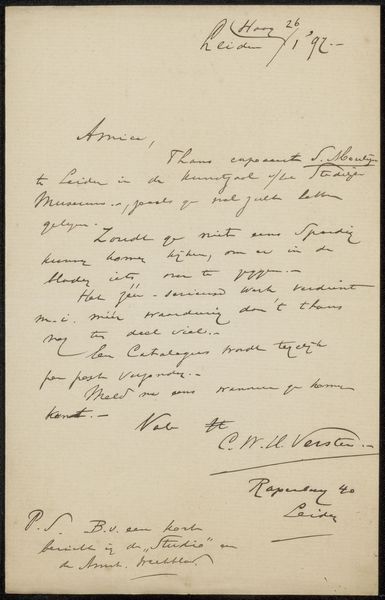
drawing, paper, ink
#
portrait
#
drawing
#
ink drawing
#
paper
#
ink
Copyright: Rijks Museum: Open Domain
Curator: We are looking at Carel Nicolaas Storm van 's-Gravesande’s “Brief aan Philip Zilcken,” thought to be from 1887, here in the Rijksmuseum collection. It’s an ink drawing on paper. Editor: My immediate impression is of intimacy, it's the delicacy of that thin ink line against the off-white paper—so direct, almost fragile. There's something inherently vulnerable about handwriting. Curator: Yes, handwriting definitely carries cultural weight. Notice how Storm van 's-Gravesande, though communicating mundane information, crafts each letter. Even just seeing a signature from the past evokes a feeling of connection to a specific time. Editor: Absolutely. And when we examine the materials—the specific type of paper, the qualities of the ink—we start piecing together a picture of the social conditions, the artist's available resources, their studio setup perhaps. Curator: He was a noted etcher, known for portraits and landscapes. Do you see how he even treats the handwritten text with the compositional sensibility he likely used for his prints? Every stroke seems carefully considered. The handwriting is clear, yet carries the personal flourish of his artistry. Editor: It speaks to the social status of both the sender and receiver as well. They could afford to correspond in this manner. Penmanship was a valued skill; it was part of social presentation. We can't ignore the role of the postal system too—that entire infrastructure making this type of personal communication possible. Curator: So true. It suggests a certain cultural value around personal correspondence that feels very different from our instantaneous digital communications of today. These artifacts quietly symbolize an older, perhaps slower, time. Editor: In the context of 1887, what would a letter like this represent to Philip Zilcken? A confirmation of status? A valuable communication, carried to you? To look at the piece's components brings insight into these possibilities. Curator: Examining it through that lens reveals the layered nature of its meaning. Beyond the literal message, it tells us about relationships, societal structures and communication rituals of the late 19th century. It really expands our view of that time. Editor: It does. I had simply looked at the lines, at first, but seeing that material embedded in the conditions of social and material means of production gives even those thin, elegantly scripted lines new value.
Comments
No comments
Be the first to comment and join the conversation on the ultimate creative platform.
